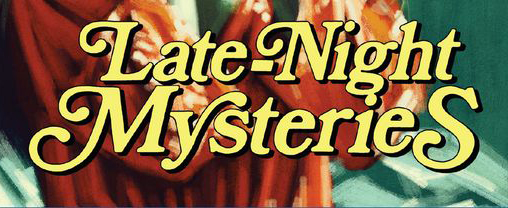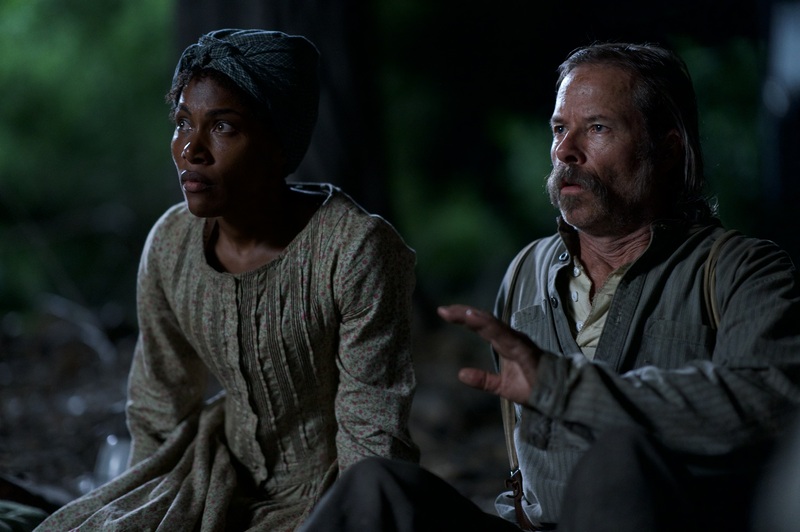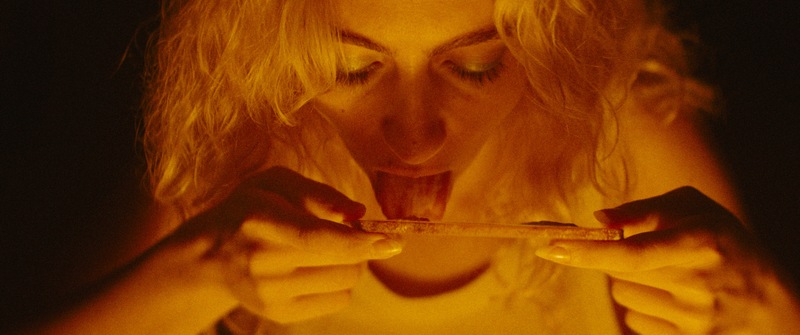
A Showcase of Television Horror’s Golden Age
MOVIE REVIEW
Dan Curtis' Late-Night Mysteries (Blu-ray)
Shadow of Fear
The Invasion of Carol Enders
Come Die With Me
Nightmare at 43 Hillcrest
–
Genre: Horror
Year Released: 1974 (ABC’s Wide World Mystery), Kino Cult Blu-ray 2025
Runtime: 4h 25m
Directors: Herbert Kenwith / Burt Brinckerhoff / Lela Swift / Herbert Kenwith
Cast: Claude Akins, Anjanette Comer, Christopher Connelly / Meredith Baxter, Christopher Connelly, Claude Akins / George Maharis, Eileen Brennan, Anjanette Comer / Claude Akins, Anjanette Comer, Meredith Baxter
Where to Watch: available now, order your copy here: www.kinolorber.com or www.amazon.com
RAVING REVIEW: Dan Curtis’ influence on horror television in the 1970s can’t be overstated. Having already carved a space for Gothic melodrama with DARK SHADOWS and expanded into cult TV films like THE NIGHT STALKER, he continued to explore eerie stories through ABC’s Wide World Mystery. The Kino Lorber collection LATE-NIGHT MYSTERIES rescues four of those productions—SHADOW OF FEAR, THE INVASION OF CAROL ENDERS, COME DIE WITH ME, and NIGHTMARE AT 43 HILLCREST—and brings them into HD for the first time. What emerges is a window into a lost era, when horror was filtered through the constraints of broadcast television, yet often found inventive ways to unsettle the audience.
The set’s opener, SHADOW OF FEAR, presents Claude Akins as a disgraced police officer drawn into the paranoia of a housewife played by Anjanette Comer. While modestly staged, the film leans into psychological uncertainty. Curtis’ team uses atmosphere more than spectacle, building tension through close-ups, shadows, and the fraying nerves of its characters.
The most intriguing entry, THE INVASION OF CAROL ENDERS, stars Meredith Baxter in a story of spiritual possession. After a fatal accident, a woman’s spirit is reincarnated in another patient’s body, creating a tale of identity and intrusion. The story is fascinating—melding supernatural tropes with psychological drama—and Baxter grounds the strangeness in something relatable. It’s the standout for its ambition, though it occasionally struggles with pacing.
COME DIE WITH ME trades the supernatural for noirish tension. George Maharis plays a smug playboy locked in a battle of wills with Eileen Brennan’s housekeeper, who knows too much. The setup is pure cat-and-mouse, a duel of manipulation and exposure. It’s the most straightforward of the set, relying on performance and dialogue rather than horror tricks, but Brennan’s sharp presence elevates the material.
The final piece, NIGHTMARE AT 43 HILLCREST, is a Kafkaesque tale of a family wrongfully accused of drug trafficking. Here, the horror is institutional rather than supernatural, tapping into the fear of ordinary people crushed by bureaucracy and suspicion. While uneven, it’s a strong reminder of how the genre can thrive on paranoia and systemic cruelty as much as monsters or ghosts.
What binds these films isn’t polish but intent. Shot on videotape, often with limited sets, they rely on story and atmosphere. Their restraint is part of their charm. Where theatrical horror of the 1970s could revel in explicit violence, these TV movies had to suggest, imply, and work within the boundaries of censorship. That forced creativity is evident in the uneasy silences, in how the supernatural is hinted at more than revealed, and in the weight that falls on the actors to convey the dread.
This Kino Cult restoration respects that legacy. Beyond simply upgrading picture quality, the set enriches the context with introductions by Jeff Thompson, commentaries from Amanda Reyes, Scott Skelton, Dan Budnik, Robert Kelly, and Heidi Honeycutt. These extras highlight Curtis’ legacy and the role television horror played in shaping the genre’s trajectory. They’re essential for understanding why these modest productions matter, especially to viewers who didn’t live through their original broadcasts.
Are they flawless? Hardly. Pacing drags in spots, and some plots feel thin by today’s standards. Dialogue can veer toward melodrama, and the limitations of early video production result in a look that is more stagey than cinematic. But their value isn’t only in whether they still frighten; it’s in their historical importance and their mood. Watching them today feels like tuning into a strange broadcast from the past, one that still thrills with the anxieties of its era.
Taken together, Dan Curtis’ Late-Night Mysteries is both a time capsule and a reminder: horror doesn’t always need big budgets or explicit shocks to haunt. Sometimes suggestion, paranoia, and the pressure of unseen forces are enough. Kino Lorber’s release ensures that these odd, atmospheric little films aren’t forgotten, and for fans of television horror—or anyone interested in Curtis’ legacy—they’re a rewarding rediscovery.
Please visit https://linktr.ee/overlyhonestr for more reviews.
You can follow me on Letterboxd, Instagram, Twitter, and YouTube. My social media accounts can also be found on most platforms by searching for 'Overly Honest Reviews'.
I’m always happy to hear from my readers; please don't hesitate to say hello or send me any questions about movies.
[photo courtesy of KINO CULT, KINO LORBER]
DISCLAIMER:
At Overly Honest Movie Reviews, we value honesty and transparency. Occasionally, we receive complimentary items for review, including DVDs, Blu-rays, CDs, Vinyl Records, Books, and more. We assure you that these arrangements do not influence our reviews, as we are committed to providing unbiased and sincere evaluations. We aim to help you make informed entertainment choices regardless of our relationship with distributors or producers.
Amazon Affiliate Links:
Additionally, this site contains Amazon affiliate links. If you purchase through these links, we may receive a commission. This affiliate arrangement does not affect our commitment to honest reviews and helps support our site. We appreciate your trust and support in navigating these links.



Average Rating